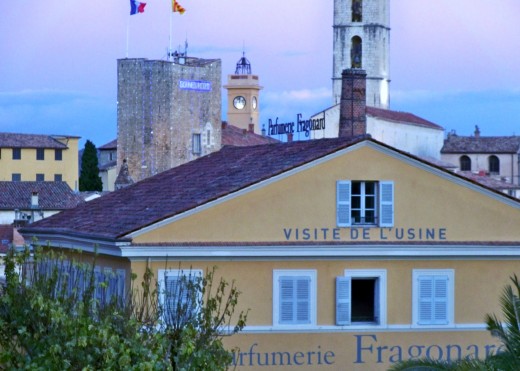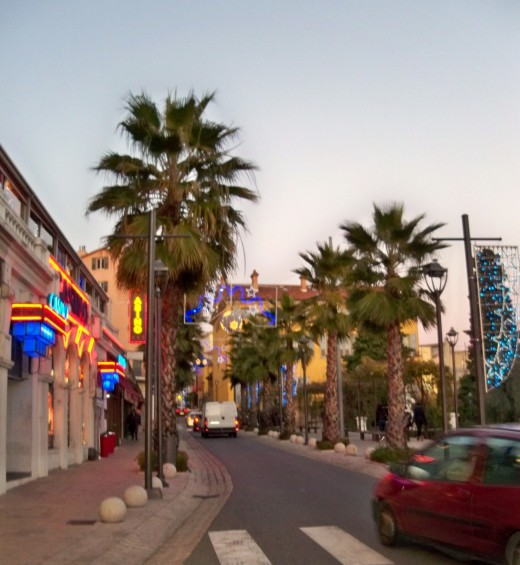The French Riviera: perfume capital of the world
Old Grasse--no mulch
Old Grasse sounds like something that has to be raked or mulched rather than the perfume capital of the world.
It hasn’t always been so. Quite the opposite. Until the 17th century it must have smelled vile because the central plaza was a tannery, where local sheep were transformed—gradually— into stylish leather gloves. The leather smelled so bad that the glovers began to scent them with powder made from the myrtle and other flowers that grew in the area.
By the early 17th century, perfumed gloves had become quite the fashion, and Louis XIII recognized Grasse’s Guild of Perfumed Glove Makers. Later in the century, Louis XIV granted the guild the exclusive right to make powder for the upper class’s powdered wigs





Until the middle of the 19th century, perfume makers were farmers who hauled their stills out to the fields where they collected the essence of their flowers to make people smell good.
Well, better.
Today, the more than two dozen perfumeries in Grasse produce two-thirds of the scents and flavorings in France.
Grasse is French for fat . The apocryphal etymology is that fat was the medium used to capture the scent of flowers, especially the more delicate flowers. The process, called enfleurage , dates from ancient Egypt. In practice here, it involved slathering fat on a glass pane in a wooden frame and then piling on the flower petals, usually something like jasmine or violets. The process was repeated in the next frame and stacked upon the first until there was a stack of about 35. When the petals had given up their essence, they were replaced with fresh petals and the process was repeated until the fat was supersaturated with the scent. Then the fat was washed in alcohol to extract the scent.
I rather doubt the name’s origin, though, since the town has existed here since the 11th century. (Look, I passed up the opportunity to say “fat chance!”)


Although the region once abounded in flowers, for the most part, synthetics have usurped their position. Certainly there are fields of flowers. Some small family farms still raise jasmine, lavender or violets, and the monastery island of St. Honorat in the Bay of Cannes has devoted much of its land to raising lavender to produce scented products they sell in their gift shop.
That is the short course for one method. Two fun ways to learn more are by visiting the International Perfume Museum at 8 Place de Cours, or creating your own scent with the help of a profession nez, or nose, who is trained to detect more than 2000 discrete scents. (So, you might want to shower before you go.) I went to the Galimard Studio des Fragrances on the Route de Pégomas to see how it is done. Plan for at least a couple of hours, but you leave with a personal scent that you helped to create. Best of all, Galimard retains the formula for when you need to replenish your supply.
The larger perfumeries, Fragonard, Galimard and Molinard, also offers free tours of their factories.
As a side-note, Grasse hosts an annual “nose convention,” the Concours des Nez for these trained professionals who are the sine qua non of the perfume industry.


There is far more to Grasse than the perfume business, though. The modern city of Grasse in the Alpes-Maritime region of France is in the hills about 30-40 minutes from Cannes. It has a temperate micro-climate that offers a respite from the summer heat on the beaches. Vieille Grasse (old town) is as lovely as any of the perched villages in the region and once drew the likes of Napoleon’s sister, Princess Pauline de Bonaparte, who spent a winter there and Queen Victoria who visited to see Baroness Alice de Rothschild’s gardens.
One of the most surprising sites is the Cathedral of Notre Dame de Puy and its handsome bell tower—it has not been the bishop’s seat since it was incorporated into the Roman Catholic Diocese of Nice in 1801. The church, which was built in the 11th century, boasts vaulted ceilings, paintings by Peter Paul Rubens and Jean-Honoré Fragonard, a native of Grasse in whose honor the largest perfumery in town is named.


The main plaza is the Place aux Aires, which has a beautiful fountain and arcades along one side. Until quite recently, it hosted a farmers’ market. Other sites to see include the handsome 100-foot Saracen Tower and city hall which occupies the former bishop’s palace. Even if you are not looking for anything in particular, just enjoy the view looking out over the Bay of Cannes or wander the narrow streets and enjoy the shops and red and yellow buildings.
- Office de tourisme de Grasse
Office de tourisme de Grasse - Grasse, Tourist Office Official Site : Guided tours
The Tourism Office offers a free walking-tour map with numbers that correspond to numbers at each of the sites. Or, if you prefer, you may rent a recorded version of the tour.










